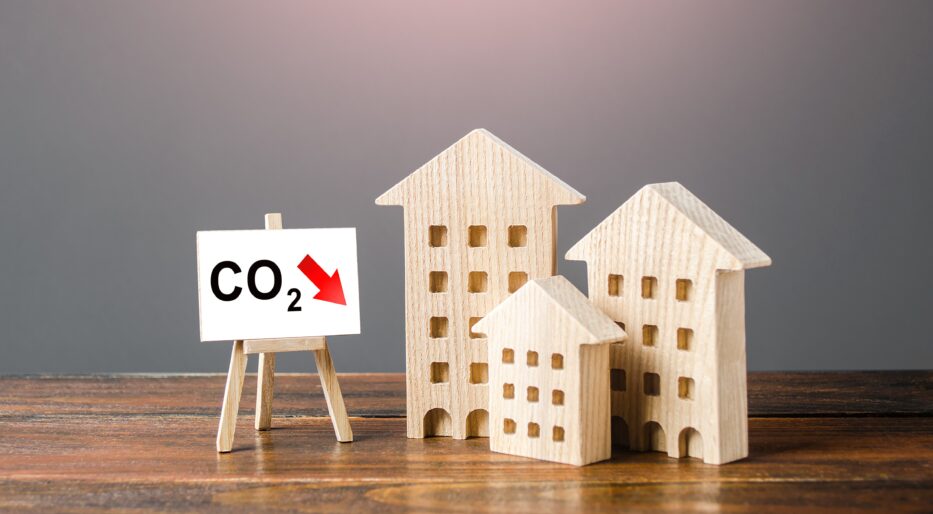Building resilience is a holistic term that applies to all aspects of building design. The definition, according to the U.S. Department of Energy, is: “The ability to resist being affected by an event or the ability to return to an acceptable level of performance in an acceptable period of time after being affected by an event closing.”
Hassan Bokhary, Building Performance Engineer‑in‑Training at RJC Engineers (RJC), prefers to describe it another way: “Resilience in the built environment is the process of introducing green house gas mitigation strategies while also adapting to future climate loads,” he said. “Both of these measures have synergistic benefits and by implementing one, the other is often accounted for.”
With climate change threatening to bring increased weather events, loss of biodiversity, and food insecurity among other consequences, building owners today are expected to take all means necessary to limit their greenhouse gas emissions.
“Across the world we have seen the dire consequences ranging from droughts in Europe and China to flooding in Pakistan and East Australia,” Bokhary said. “All these events have led to the loss of billions of dollars in infrastructure, substantial loss of life, and in some cases, they have created a humanitarian crisis. In Canada, we have seen the increasing frequency of massive wildfires, rising summer temperatures, and flooding of low lying areas. With all our past predictive modelling now proving accurate, it is time to act lest things become even worse.”
If owners and operators do not address their building’s deficiencies in a timely manner, Bokhary warns they run the risk of being exposed to several costly and potentially dangerous outcomes, overheating being one of them.
“Overheating is a scenario that can arise due to high solar heat gains and a lack of cooling,” he said. “When space temperatures inside become dangerously high, tenants (especially the vulnerable ones) are susceptible to heat exhaustion and stroke. This problem has led to a 2022 EGBC practice advisory addressing considerations pertaining to overheating in multifamily buildings. The advisory is now calling on professionals to analyze, design and recommend mitigation strategies when working on these projects.”
Owners and operators can also reduce their exposure to blackouts and grid outages by using energy offsetting systems. As Bokhary put it, “Not only will this building resilience measure reduce the risk of your systems shutting down, but it will increase your building’s performance, which coincides with utility cost savings and potentially lower maintenance.”
Top 5 ways to increase building resiliency
While there are many tools and measures that will help lower energy consumption and limit GHG emissions in the built environment, Bokhary recommends the following:
- Consult with an energy professional: “By bringing an energy and sustainability consultant onboard, your project will benefit from an overview of the potential risks and ensure an optimized strategy for low carbon resiliency is developed.”
- Reduce passive demand: “Improvements to the building envelope, optimizing shade and lowering solar heat gain coefficients are some of the ways to lower your building’s reliance on the grid at peak times.”
- Reduce active demand: “Increasing the efficiency of mechanical systems, recover exhaust heat for DHW and ventilation, improving lighting design and optimizing control strategies are some of the recommended ways to reduce active demand.”
- Use energy offsets: “The use of supplementary and substitutionary systems that complement your building design, such as photovoltaics, battery storage, and thermal storage systems, are a good way to lower emissions.”
- Look to the future: “Conduct a future, weather-based analysis to develop an action plan or have the capacity to adjust your systems as needed down the road. The solutions that were acceptable five years ago will not be acceptable 20 or 30 years from now. Building owners and operators should look beyond the current codes, all of which are largely dependent on historical knowledge.”
When to invest
Addressing deficiencies in aging buildings is a necessity that shouldn’t be put off. That said, to lessen the cost and disruption to occupants, Bokhary recommends investing in resiliency measures when a particular component of the building, such as the envelope, mechanical or electrical, is due for replacement.
“Often times, the Net Present Value for a more resilient and efficient alternative is better than replacing with like-for-like components,” he said, adding that building owners should also take advantage of government grants and incentives. “The Canadian Mortgage Housing Cooperation has multiple funding programs for new and existing buildings, which require the project to meet certain energy targets. Similarly, Fortis BC and Clean BC have programs for commercial, MURBs or single-family homes, which incentivize costs towards design and equipment.”
For more information, visit www.rjc.ca or contact Hassan Bokhary directly at: HBokhary@rjc.ca






